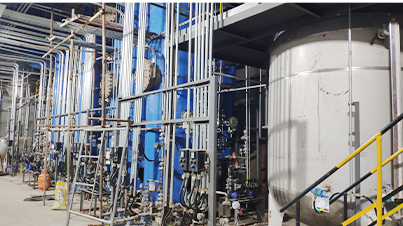Exploring the Applications and Benefits of Hydrolyzed Polyacrylamide in Various Industries
Hydrolyzed polyacrylamide (HPAM) is a synthetic polymer that has garnered significant attention due to its versatile applications in various fields, including oil recovery, agriculture, and wastewater treatment. This polymer is derived from polyacrylamide, which is produced through the polymerization of acrylamide monomers. The hydrolysis process involves the reaction of polyacrylamide with water, resulting in a mixture that contains both acrylamide and its hydrolyzed version, which contributes to its unique properties.
One of the primary uses of hydrolyzed polyacrylamide is in enhanced oil recovery (EOR). In this context, HPAM is employed to improve the mobility of crude oil during extraction. It functions as a viscosity modifier, altering the flow characteristics of the water used to push the oil out of the reservoir. By increasing the viscosity of the water, HPAM helps to reduce the capillary pressure within the porous rock formations, thereby allowing for a more efficient oil recovery process. This is particularly vital in mature oil fields, where traditional extraction methods might yield diminishing returns.
In agriculture, hydrolyzed polyacrylamide serves a crucial role in soil conditioning and water retention. When applied to soils, HPAM enhances the soil's ability to hold moisture, thus promoting better crop yields. This is particularly beneficial in arid regions where water scarcity is a significant challenge. By improving soil structure and preventing soil erosion, HPAM contributes to sustainable agricultural practices, allowing farmers to maximize their output while conserving water resources.
hydrolyzed polyacrylamide

Another critical application of HPAM is in wastewater treatment. The polymer acts as a flocculant, facilitating the aggregation of suspended particles in water. This process aids in the separation of solids from liquids, thus improving the efficiency of wastewater treatment plants. The use of hydrolyzed polyacrylamide in this context not only enhances the quality of treated water but also minimizes the environmental impact of industrial effluents and sewage.
Despite its numerous advantages, there are considerations regarding the environmental impact of hydrolyzed polyacrylamide. While its use is generally regarded as safe, concerns about the potential toxicity of acrylamide and its derivatives have led to ongoing research to assess the long-term effects on ecosystems.
In conclusion, hydrolyzed polyacrylamide is a valuable polymer with diverse applications across various industries. Its ability to improve efficiency in oil recovery, enhance agricultural productivity, and aid in wastewater treatment highlights its significance. As research continues, the focus will likely be on optimizing its use while ensuring environmental safety and sustainability.
-
Understanding Polycarboxylic Acids: Properties, Applications, and Future PotentialNewsJul.28,2025
-
Scale Inhibitor Explained: How to Protect Your System from Limescale and Hard Water DamageNewsJul.28,2025
-
Scale and Corrosion Inhibitors: Essential Chemicals for Industrial Water System ProtectionNewsJul.28,2025
-
Polyaspartic Acid: A Biodegradable Polymer for Sustainable ChemistryNewsJul.28,2025
-
Isothiazolinones: A Versatile Antimicrobial Class with Industrial Power and Regulatory ChallengesNewsJul.28,2025
-
A Deep Dive into 2-Phosphonobutane-1,2,4-Tricarboxylic Acid (PBTC)NewsJul.28,2025





